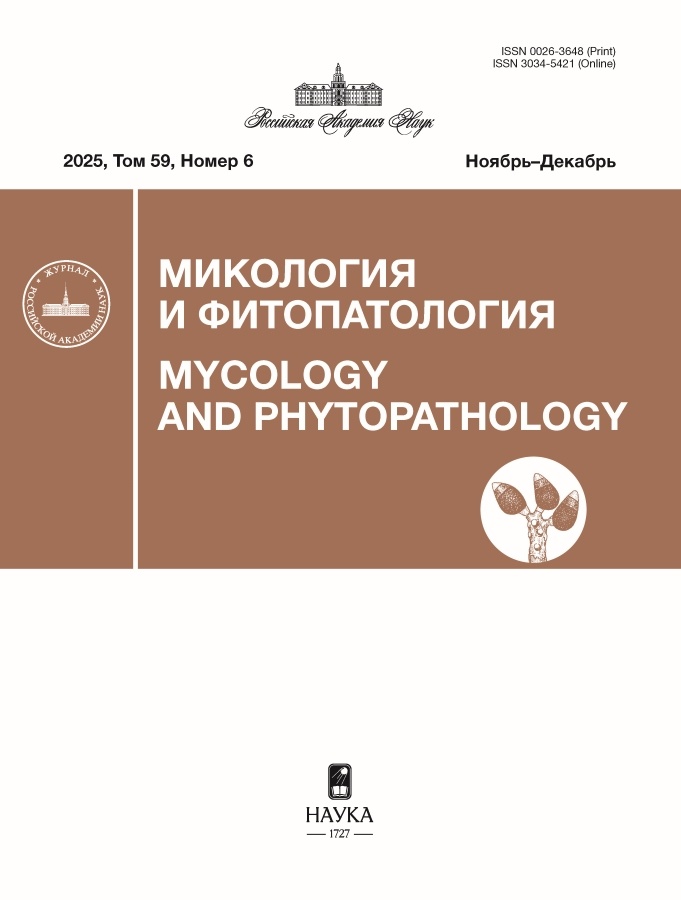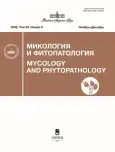Mycology and Phytopathology
ISSN (print): 0026-3648
Media registration certificate: No. FS 77 – 66715 dated July 28, 2016
Founder: Russian Academy of Sciences
Editor-in-Chief: Yuri Novozhilov
Number of issues per year: 6
Indexation: RISC, list of Higher Attestation Commissions, Scopus, CrossRef, White List (level 2)
"Mikologiâ i fitopatologiâ" is a peer-reviewed international journal, with a high standing in the scientific world. The journal is subscripted in the bibliographic database Scopus.
Founded in January 1967 by the Academy of Sciences of the USSR, it is now published by the Biological Sciences Branch of the Russian Academy of Sciences (RAS).
The journal is devoted to all fields of fungal science, including fungal diseases of plants. It publishes original articles, reviews, discussions, bibliographies and descriptions of new methods.
Ағымдағы шығарылым
Том 59, № 6 (2025)
БИОРАЗНООБРАЗИЕ, СИСТЕМАТИКА, ЭКОЛОГИЯ
New species for regional mycobiotas of Russia. 10. Report 2025
Аннотация
 461-471
461-471


Additions to the biota of aphyllophoroid fungi on the Gunib plateau (Republic of Dagestan, Russia)
Аннотация
 472-476
472-476


Detection of Malassezia Fungi in Microplankton and Fishes in the Severnaya Bay, Sevastopol (Russia)
Аннотация
 477-481
477-481


New Records of Basidiomycetous Macrofungi for the Shantar Islands National Park (Khabarovsk Krai, Russia)
Аннотация
 482-492
482-492


Revision of the Genus Entoloma s. l. (Entolomataceae, Agaricales, Basidiomycota) in the Komi Republic (North-East of the European Part of Russia)
Аннотация
 493-507
493-507


SPECIES DIVERSITY AND ENZYMATIC ACTIVITY OF MICROFUNGI ISOLATED FROM DRIFTWOOD AT THE NOVAYA ZEMLYA ARCHIPELAGO
Аннотация
 508-518
508-518


NEW AND RARE FUNGI ON ALIEN WOODY PLANTS IN SVERDLOVSK REGION (THE MIDDLE URALS, RUSSIA)
Аннотация
 519-528
519-528


ФИЗИОЛОГИЯ, БИОХИМИЯ, БИОТЕХНОЛОГИЯ
Impact of Pure Culture Storage Techniques on the Endoglucanase Activity in Macrofungi
Аннотация
 529-537
529-537


Bifunctional Effect of Fusarium stercicola F8 Strain on Microcystis aeruginosa Cyanobacterium
Аннотация
 538-547
538-547


SHORT COMMUNICATIONS
First Record of COMATRICHA MEANDRISPORA (MYXOMYCETES) in Russia
Аннотация
 548-552
548-552












